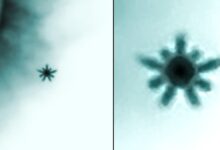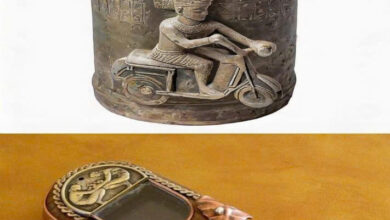The Most Terrifying Finds Of Nazi Germany In WW2
The Most Terrifying Finds Of Nazi Germany In WW2
World War II left behind chilling remnants of Nazi ambitions, some of which are only now being uncovered. These terrifying discoveries reveal the scale of Nazi secret projects, hidden treasures, and the immense human suffering endured during the war.
1. Wolf’s Lair
Located in Poland, Hitler’s first military headquarters, Wolf’s Lair, consisted of underground bunkers and tunnels designed to protect him from assassination. Though destroyed by German forces in 1945, the ruins still evoke unease, symbolizing the Nazis’ paranoia and military planning.
2. Riese Complex
A vast underground network built in the Owl Mountains of Poland, this complex remains shrouded in mystery. Forced laborers were used to dig tunnels and chambers, possibly for weapon development or a secret command center. Though unfinished, it stands as a grim reminder of Nazi desperation.
3. Berlin Flak Towers
These towering concrete structures were designed to protect Berlin from air raids. Despite heavy bombardment, they endured as Nazi last-stands during the war. Some remnants still stand, showcasing the regime’s scale of defense efforts.
4. Altaussee Salt Mine Art Treasures
Nazi forces hid priceless art in Austria’s Altaussee Salt Mine, including works by Vermeer and Michelangelo. Local miners thwarted the Nazis’ plan to destroy these treasures, and after the war, the Monuments Men recovered many of them.
5. The Amber Room
The Amber Room, a gold and amber masterpiece looted by the Nazis, disappeared after being transported to Königsberg Castle. Despite extensive searches, its fate remains one of WWII’s greatest mysteries.
6. Hurlock Reactor Cave
In 1944, German physicists attempted to develop nuclear power beneath a brewery cellar in Hurlock, Germany. Though progress was delayed by bombings and sabotage, U.S. troops discovered an unfinished reactor, revealing how close the Nazis came to nuclear development.
7. Merkers Salt Mine Treasure
U.S. troops uncovered a treasure trove in the Merkers Salt Mine in 1945, including gold bars, silver, and looted artwork. This discovery revealed the extent of Nazi plundering and became vital evidence in post-war prosecutions.
8. U-864 Toxic Cargo
The German submarine U-864, carrying toxic mercury and steel, sank in 1945. Decades later, the wreck revealed the environmental hazards posed by the submarine, adding to the long-lasting consequences of WWII.
9. Nazi Gold Train Myth
A legend persists about a hidden armored train filled with Nazi treasures, including gold and jewels. Despite multiple investigations, no solid evidence has been found, but the myth remains strong, especially around the Riese complex.
10. D-Glocka Superweapon
Nazi Germany allegedly worked on a mysterious superweapon known as the D-Glocka, involving anti-gravity technology. Although much of the information is speculative, it adds to the chilling idea that the Nazis may have been experimenting with futuristic technology.
11. Horton Ho 229
A prototype stealth bomber designed during WWII, the Horton Ho 229 foreshadowed modern stealth aircraft. Its advanced design represents a chilling example of Nazi innovation that could have changed the war’s outcome.
These discoveries paint a haunting picture of Nazi Germany’s efforts to conceal weapons, treasures, and even secret technology. The cost of these operations was immense, with forced labor, mass casualties, and environmental damage marking the war’s legacy. Each site unearthed offers more insight into the regime’s dark ambitions and their attempt to shield their secrets from the Allies.
Which discovery had the biggest impact on you? Share your thoughts in the comments.




